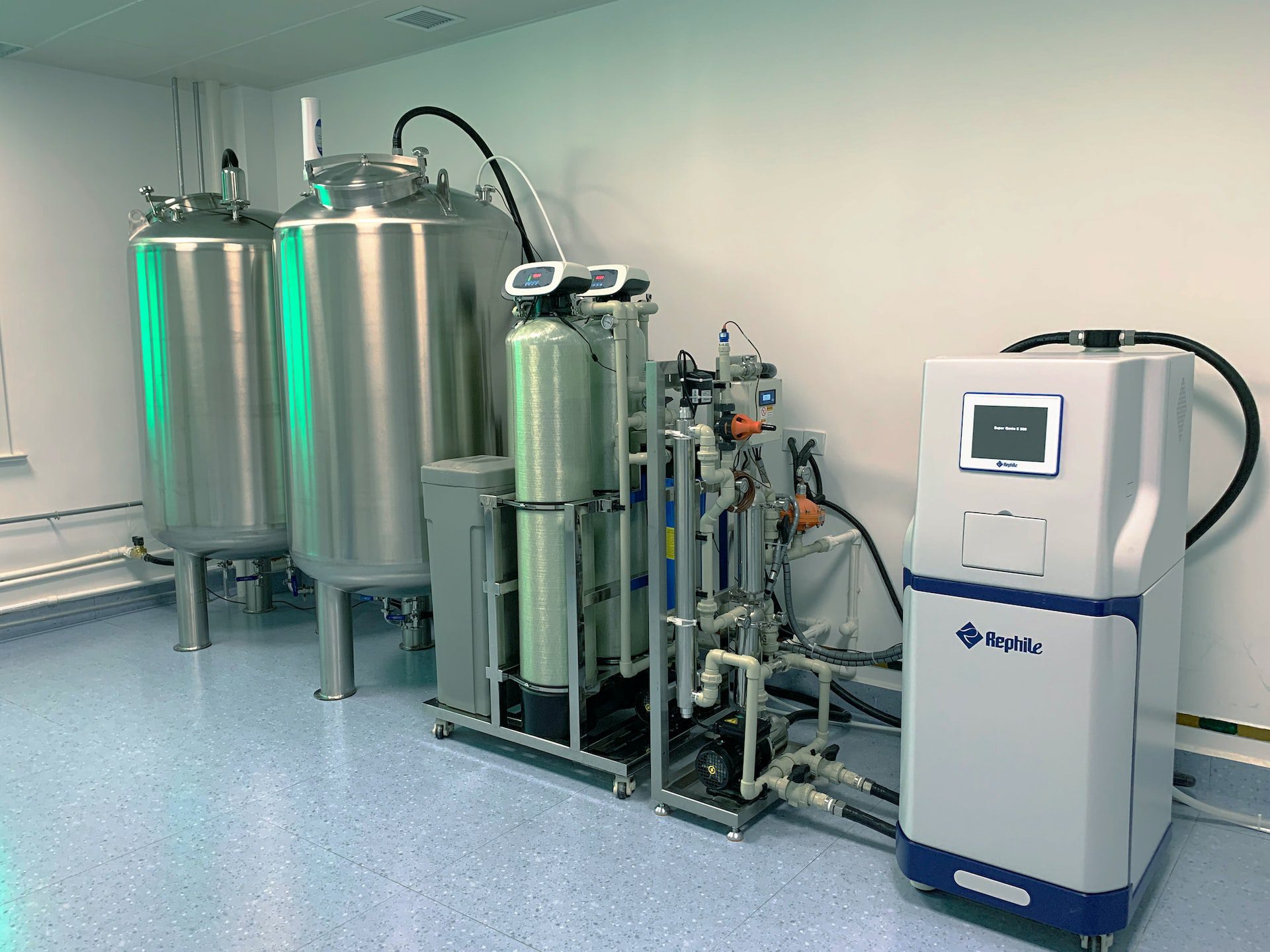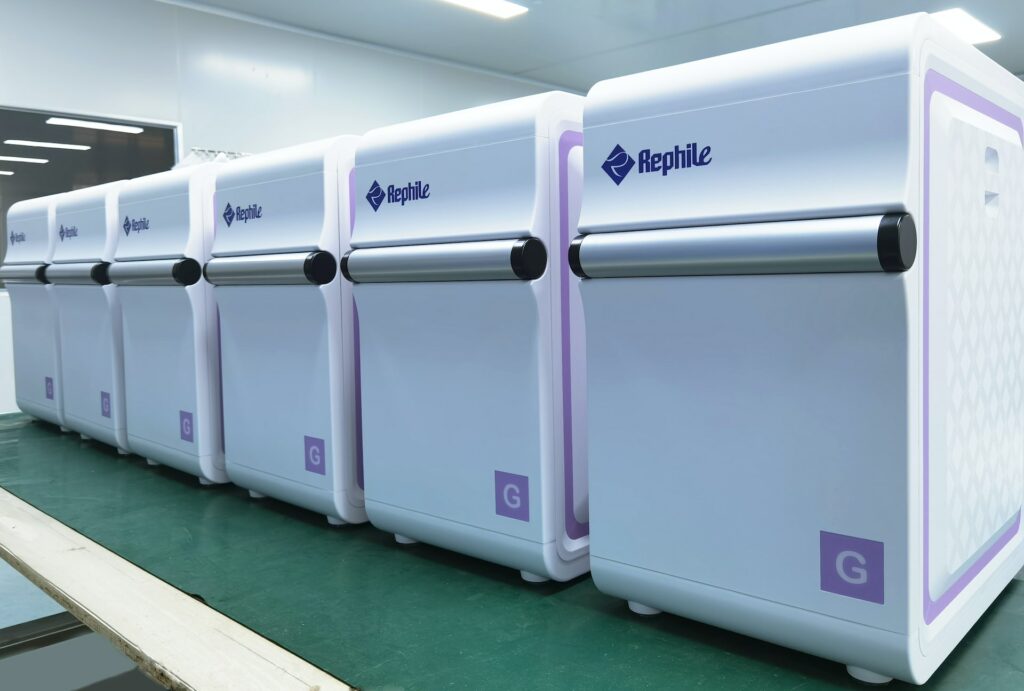01/15/2023 | Industrial Wastewater | 8 MINUTE READ
Industrial Applications of Reverse Osmosis (RO) Systems

When you need to filter or purify water in an industrial setting, there are several purification methods that can be used. However, the most common water purification technology employed in industrial settings is reverse osmosis, which is a process that was first discovered by Jean-Antoine Nollet in 1748. It wasn’t until 1950 that the University of California at Los Angeles was able to develop a reverse osmosis technique for water purification purposes.
Shortly after the beginning of the 21st century, there were more than 15,000 distillation plants throughout the U.S. that had adopted the reverse osmosis method. The many industrial applications that reverse osmosis is used for involve removing dissolved contaminants from water. Along with chemical contaminants, this technique can remove biological and microbial contaminants as well.
Reverse osmosis systems are highly popular in industrial settings because of their ability to remove more types of contaminants than all other systems. You can also expand system functionality by combining a reverse osmosis system with other filtration or purification devices. The following details everything you should know about reverse osmosis, the sectors it’s used in, and how it works.

What is Reverse Osmosis (RO)?
The reverse osmosis (RO) process occurs when raw water is sent through a system to remove contaminants and impurities. These systems are outfitted with the most advanced membranes that allow most of the impurities in water to be removed without needing to use resins, ion exchange beds, or chemicals. Raw water refers to any water that hasn’t been treated to remove contaminants. This type of water is placed into an RO system through a break tank. Keep in mind that this water can differ in quality depending on your geographical location.
While other types of filtration units use a low-pressure water system, reverse osmosis uses a high-pressure pump to push water directly through the membranes, which results in more impurities being removed. Once these contaminants have been removed, the quality and purity of the water supply are substantially improved.
How Does Reverse Osmosis Work?
All reverse osmosis systems are equipped with a semi-permeable membrane. When water is pushed through this membrane, around 95-99% of all dissolved salts are left behind. The amount of pressure that must be applied depends on the feed water’s salt concentration. A high concentration of contaminants means that more pressure is required.
The clean and filtered water is referred to as permeate water. As for the water that’s left behind, it’s known as the concentrate stream. When the feed water is placed through the membrane, the concentrate stream will go into a drain or can be fed back through the system for recycling purposes.
These systems use cross filtration as opposed to standard filtration, which means that the contaminants aren’t collected in filter media. Because of how a reverse osmosis system is set up, the filtered water goes in one direction with the contaminated water going in the opposite direction. The concentrate water will sweep contaminant buildup away, which ensures that the membrane surface is kept clean.

What Industries Can RO Be Used In?
Since water is needed for the majority of manufacturing applications to clean machinery, produce consumables, wash packaging, and process parts, reverse osmosis systems are used in many industries. The main sectors that use these systems include:
- Agriculture
- Pharmaceutical
- Aerospace
- Automotive
- Industrial
- Finishing
- Food and beverage
A considerable amount of water is used when creating a vehicle. The wastewater that’s produced from this process may consist of oils, grease, metals, and hazardous chemicals. If this contaminated water gets into the main water system, it can damage the environment.
As for the food and beverage sector, this industry is strictly regulated, which results in high water use. Along with being used as an ingredient in many drinks and food, it’s also part of food hygiene. Water is commonly used to keep harmful bacteria at bay by washing poultry and meat before consumption. To make sure that contaminants aren’t introduced to food or beverages, the water must be purified.
When looking at the aerospace industry, it uses a considerable amount of water daily when servicing commercial, space exploration, and defense projects. The aerospace industry requires a highly precise filtration system to make sure that the strict standards in the industry are maintained before any aircraft are used.
The pharmaceutical industry uses and wastes a high amount of water because of the chemicals that are required when producing medical products. Along with medication, this particular sector produces cleaning agents and other chemical-based products that require ample amounts of water. Businesses are able to reduce the amount of water they use by implementing a treatment system for wastewater that gets rid of bacteria and chemicals.

Reverse osmosis systems have become popular in the agriculture industry as well. This industry is highly regulated when it comes to hygiene standards because of the need to control disease among produce and other crops. Water is an essential aspect of the growth of crops, cleaning of farm equipment, and storage of produce.
On farms, water is commonly used to clean dairy sheds and make sure that harmful bacteria don’t spread. When bacteria spread, the resulting illnesses could severely impact a farm in the event that the entire herd was affected. The cost of having a reverse osmosis system installed on your site is considerably more affordable compared to the damages that can be done if harmful bacteria infect livestock. Reverse osmosis systems will take most bacteria out of the water, which reduces the need for additional filtration systems.
As for the finishing industry, it uses more water than most. Facilities are tasked with ensuring that the products they create meet the highest standard and are fully consistent with all previous colors. The finishing process may be chemical or mechanical in nature, which means that oils and other harmful substances will wash into the water before it’s disposed of.
Water is regularly used in industrial processes as well. While industrial and manufacturing facilities use high amounts of water when performing everyday processes, water must also be used to cool down equipment and products.
Because of the high volumes that are required, many businesses in the industrial sector must contend with water scarcity. When water is scarce, water companies can place large surcharges on bills for high water use. Reverse osmosis units can be highly advantageous in the industrial sector since cleaning the water allows it to be reused.
Industrial Applications of Reverse Osmosis (RO)
Here are some of the most common applications of reverse osmosis systems in industrial processes.

Municipal Water Purification
Municipal water is regularly used for commercial and domestic applications. Along with washing and cooking applications, high-quality water is necessary for quality control to ensure consistency in recipes or soda. Commercial-grade reverse osmosis systems are outfitted in many municipal water facilities to purify this water and make sure that its quality is high enough.
Desalination of Seawater
The main source of water for most coastal areas comes from seas and oceans, which contain salt and contaminant levels of as much as 35,000 mg/L. High salinity water is required for cruise ships, off-shore drilling, and marine industrial applications. If these applications are constantly using water that contains high contaminant levels, marine equipment can be damaged. High-pressure reverse osmosis systems assist with the desalination of seawater as well as the reduction of bacterial and chemical contamination.
Desalination of Brackish Water
A combination of salt and fresh water is considered brackish when the dissolved salt concentration is anywhere from 1,000-15,000 mg/L. In comparison, potable drinking water must be kept at salinity levels of less than 500 mg/L. If your feed water is currently brackish, the reverse osmosis technique should remove nearly all contaminants.
Boiler Feed Water
Industrial boilers are considered to be highly sensitive to hard water. When this water is heated at a high temperature, there are several issues that can occur and may impact the quality and efficiency of the boiler. These issues include everything from scaling and thermal transfer deficiencies to an increased downtime for cleaning purposes.
Make sure that the water you feed into a boiler system is softened before use. Industrial facilities performing mechanical, pharmaceutical, or chemical applications will treat the water with a reverse osmosis system before the water is placed into a boiler.
Wastewater Treatment
Many water treatment facilities have already implemented reverse osmosis as the main water purification method. It’s regularly used as the last stage of treatment to keep bacterial, chemical, and dissolved impurities out of the water.
Spot-free Rinse
Salt-free water is commonly required in equipment cleaning and industrial manufacturing processes. Surface rinsing and car washing applications also require salt-free water. Without softened water, it’s likely that hard surface spots, surface bleaching, and scaling will occur. By purifying rinsing water with a reverse osmosis system, it’s possible to mitigate equipment damage.
Reverse osmosis purification systems are powerful enough to get rid of 99% of all contaminants that can be present in water, which is why these systems are being adopted by an increasing number of industrial facilities and business across the world. While other filtration techniques can be effective at removing contaminants from water, RO systems are among the only ones that can be used at commercial scale without spending too much money.
Posted by Dominic O'Donnell on January 15, 2023
Sensorex is a global leader in the design and manufacture of quality sensors for water quality and process applications. The company offers more than 2000 sensor packages for pH, ORP, conductivity, dissolved oxygen, free chlorine, chlorine dioxide, UV transmittance and other specialty measurements, as well as a full line of sensor accessories and transmitters. Its expert technical support engineers solve analytical sensor challenges with custom designs and off the shelf products.




